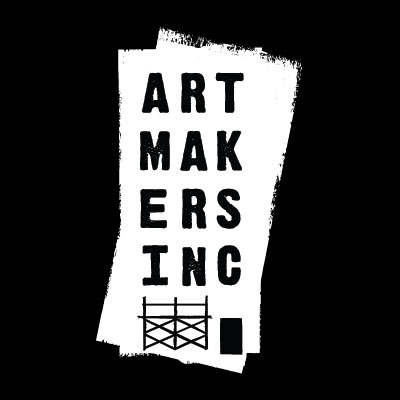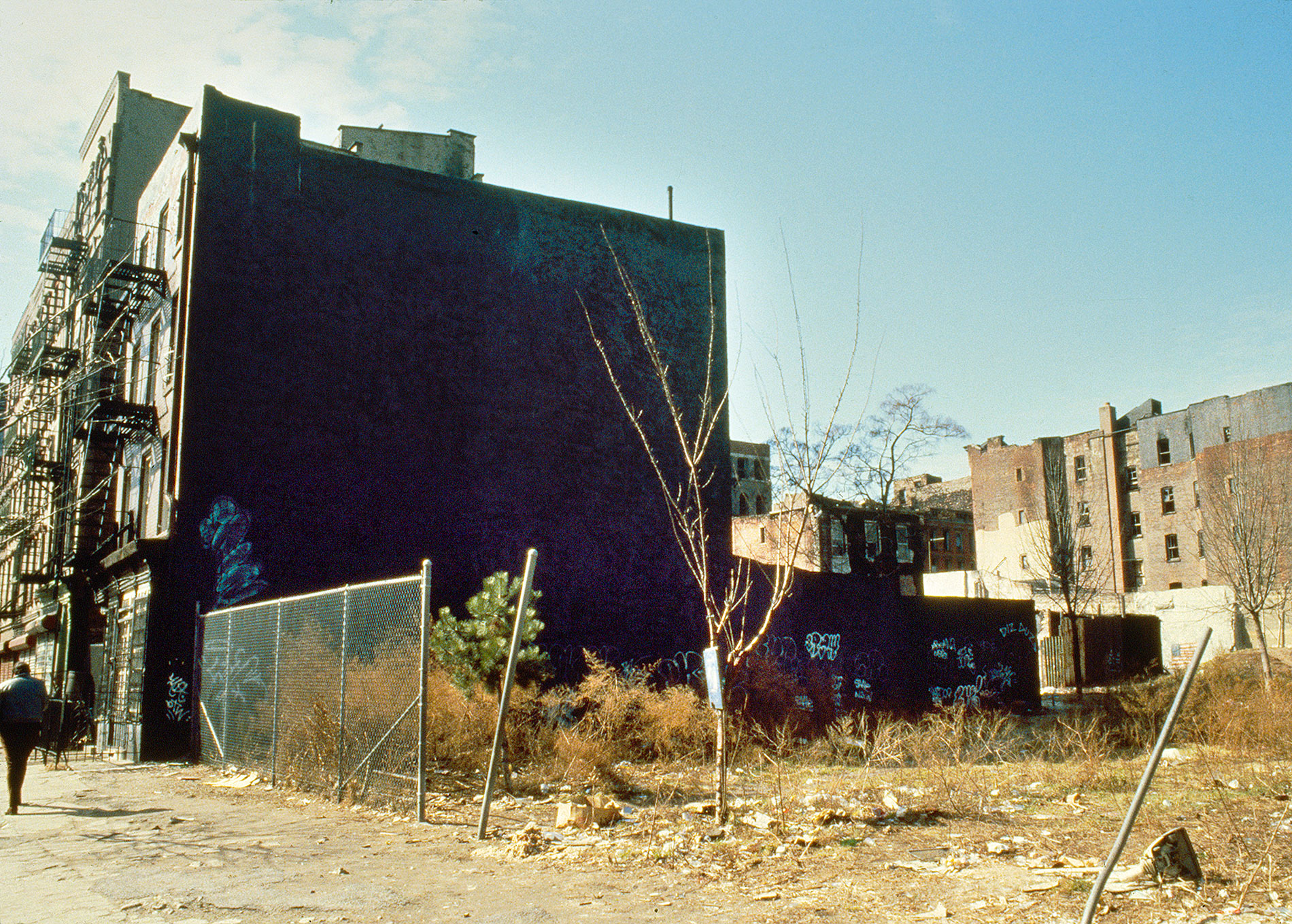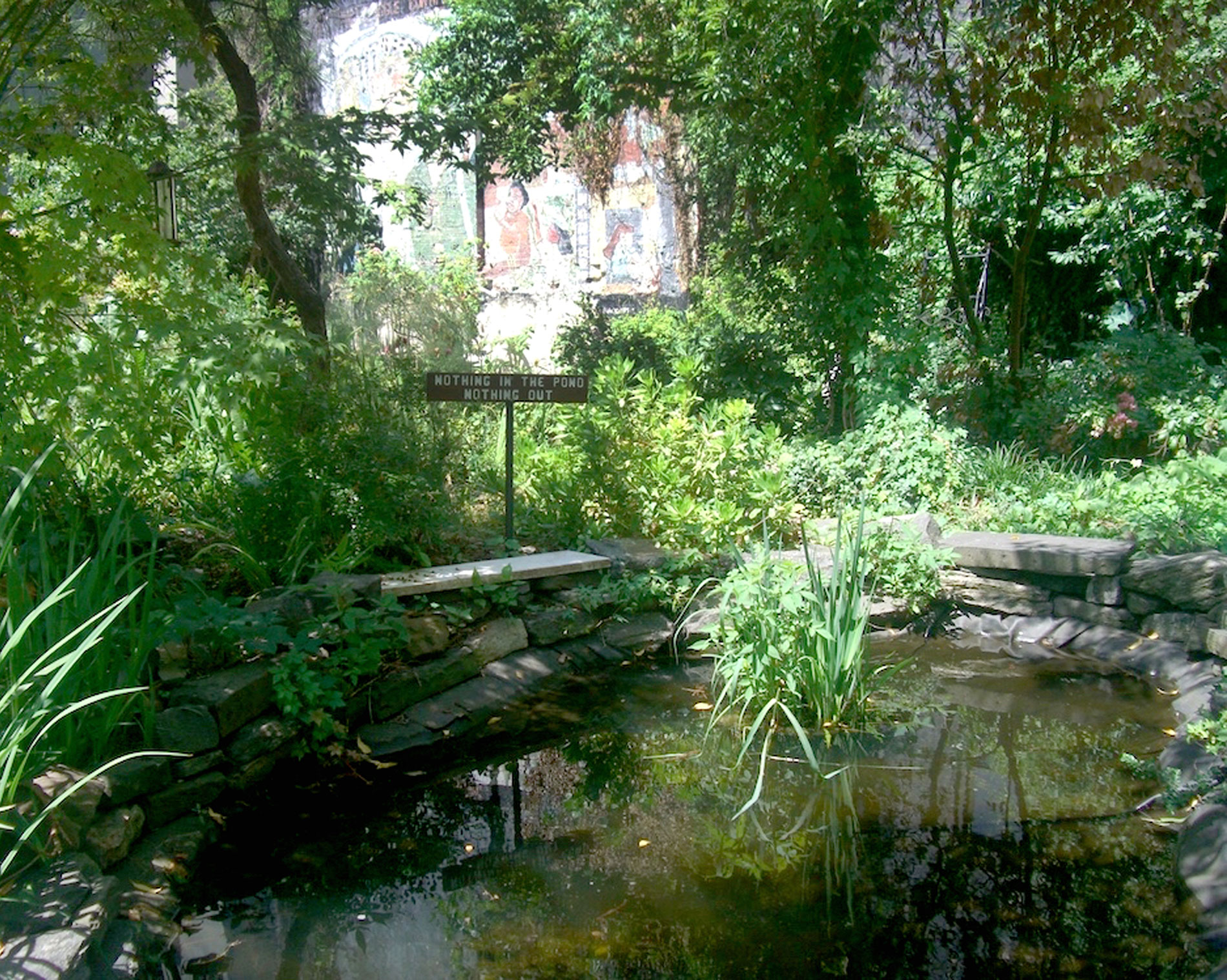Courtesy of Karin Batten
WANTED: Artists of Conviction to Paint Political Murals. Summer 1985.
Flyers with the above words—posted throughout Manhattan’s East Village (Loisaida) by Artmakers Inc.—announced a May 7, 1985 meeting to plan La Lucha Continua The Struggle Continues. That summer, 34 artists would paint 24 murals on seven walls of the four buildings overlooking La Plaza Cultural community garden, located on Avenue C and extending midblock from East 8th to East 9th Street. In 1986, artists painted two additional murals. Combined, they covered 6,645 square feet of wall and addressed six political issues: gentrification, police brutality, immigration, feminism, and opposition to U.S. intervention in Central America and apartheid in South Africa.
La Plaza Cultural in 1985
Photo © Camille Perrottet
If, by the mid-1980s, much of New York City had emerged from the fiscally bleak years of the 1970s, Loisaida residents remained beset by poverty and drugs, victims of gentrification and displacement and fraught community-police relations. La Plaza Cultural was equally beleaguered. Developed in 1977, the garden by 1985 was neglected and filled with garbage. Except for vagrants and crack addicts, neighborhood gardeners and residents generally avoided it. Of the buildings surrounding La Plaza, most were vacant, some were homesteaded, and a few were taken over by squatters.
La Plaza Cultural today
Photo © Don Yorty
Today, the garden is thriving and, while only two of the La Lucha murals still exist—their paint cracked and faded—the issues that informed them remain of deep concern.
Activists continue to lobby for truly affordable living spaces and against the rampant growth of tall buildings that replace older, viable housing. At risk is Roe v. Wade ensuring, since 1973, legal access to abortion, as is funding for reproductive health services for poor women. Immigrants—long residing in the United States and without serious or any criminal record—live in fear of deportation and the potential break-up of their families. The proposed construction of a wall along the Rio Grande River is as misguided as it is outrageously expensive. Stop-and-frisk practices are not equally applied, and minority youth (and adults, too) continue to be killed by police who are not held accountable. Opposition to apartheid in South Africa has morphed into protests against blatant racism in the United States, resulting in the Black Lives Matter movement, as well as the advocacy for Palestinian rights and a two-state solution. Opposition to U.S. interventions in Central America today translates to the rise in militarism and U.S. involvement in ongoing conflicts in Iraq, Afghanistan, Syria, and Yemen.
La Lucha Continua The Struggle Continues: 1985 & 2017 is more than an excavation of the past or an analysis of the social, political, and cultural context in which the murals were created. The exhibition also examines how the murals defined, protected, and rehabilitated a community. It is a lens aimed at today’s Loisaida, focusing on how the issues and the neighborhood have changed over three decades.
Eva Cockcroft
Photo © Camille Perrottet
In 1983, Eva Cockcroft founded Artmakers as an artist-run politically-oriented community mural organization to create high quality public art relevant to the lives, work and concerns of people in their neighborhoods. At the time, she famously said, “Painted images cannot stop wars or win the struggle for justice, but, they are not irrelevant. They fortify and enrich the spirit of those who are committed to the struggle and help educate those who are unaware.”
Jane Weissman, exhibition curator
JANE WEISSMAN
A member of Artmakers since 1991 and its longtime administrative director, Jane is co-author of On the Wall: Four Decades of Community Murals in New York City and When Women Pursue Justice, based on Artmakers’ 2005 mural. She curated Images of the African Diaspora in New York City Murals, traveling it to Paris and Dakar.





